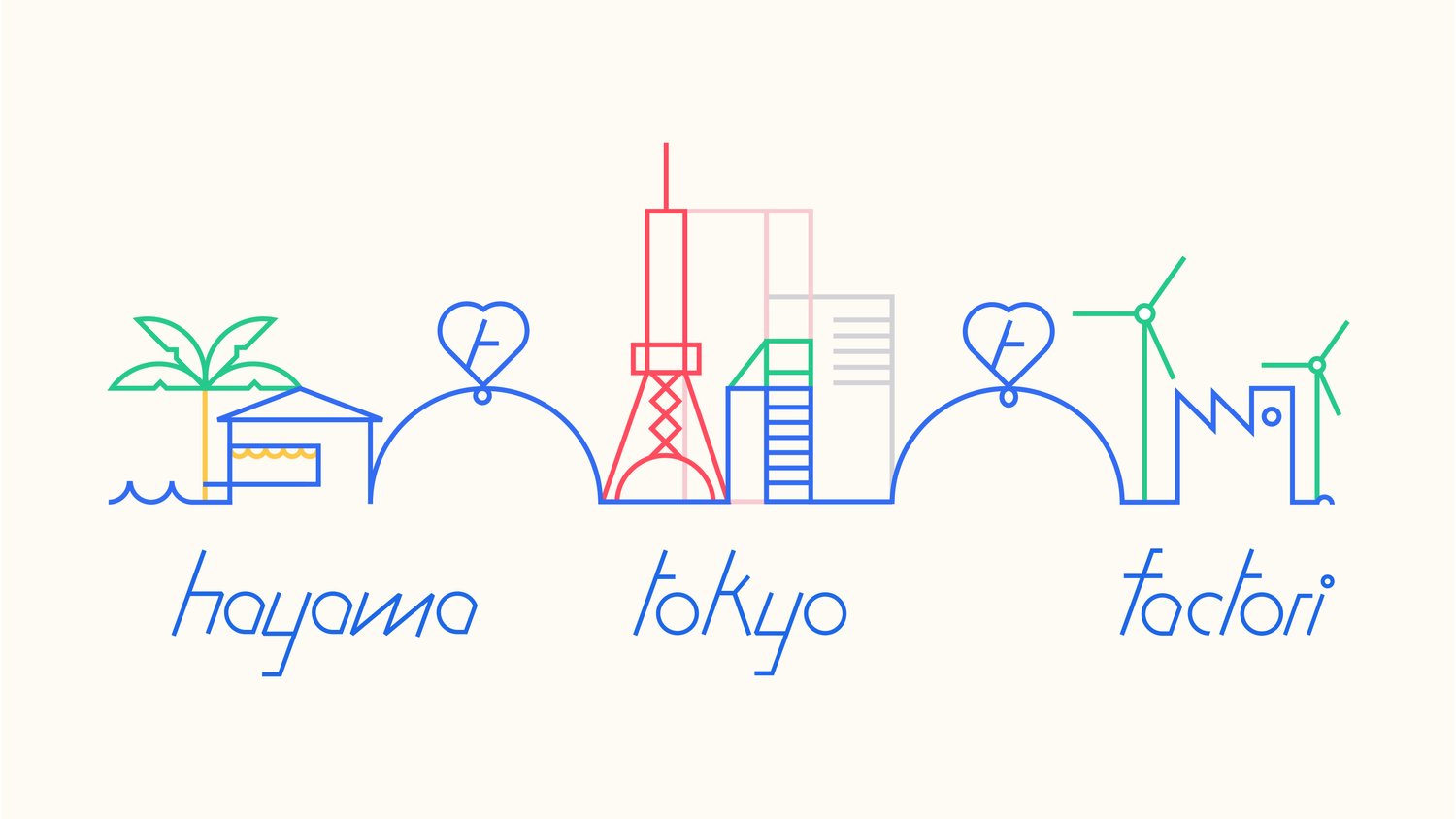Hey there, we're tonari! And I'm Alisaun 🙋🏼♀️ — I lead our partnerships, success, and user research efforts.
We're a team of 11 and together we've built a product that connects spaces. It's a completely new experience in remote communication that we use every day.
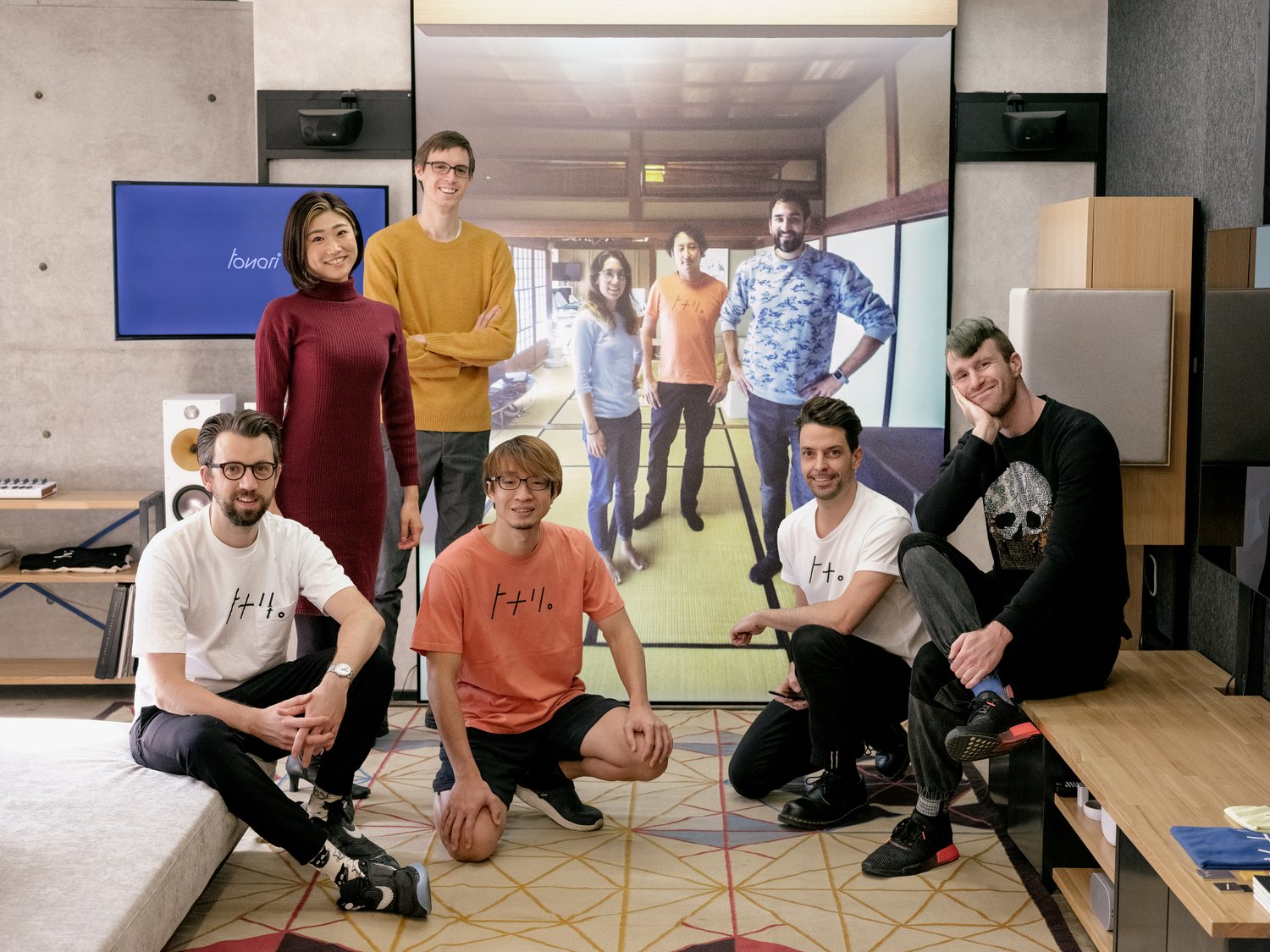
Notion inspired us to write about how we use and test our own product. We figure this is also a good chance to share more about how we work, how we’ve grown as a team, and to pull up some memorable photos from the archives. And so first, a trip through time...
In the beginning
tonari began during the summer of 2017, when founders Ryo and Taj gathered friends to make a concept video and technical demonstration. Back then, we worked from the Straylight hackerspace, a small community-run makers garage on the west end of Yoyogi Park. This is what it looked like then:
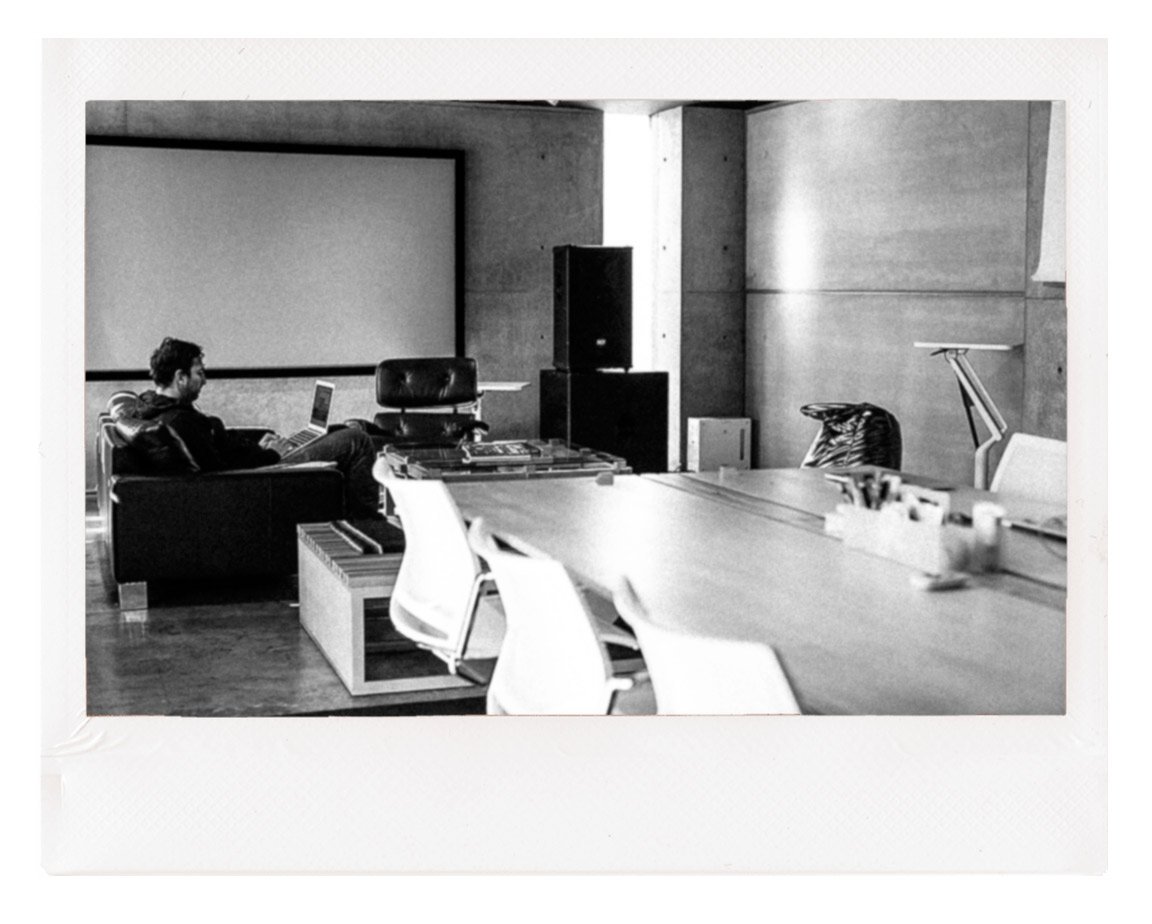
Soon thereafter, tonari was awarded its first grant, and in 2018, Ryo and Taj formed a team that grew to include Shiro, Jake, Alvaro, and myself (Alisaun). The grant funded the purchase of hardware, rents and salaries, and enabled us to begin development of a complete proof of concept.
For nearly a year, we did all of our development and testing at the Straylight space in Tokyo. But as we made progress, it was obvious that something was missing. Since tonari is about connecting remote spaces, we ultimately needed a second remote location to properly build an end-to-end prototype. Fortunately, Taj’s friends were already sharing a beautiful old house in Hayama, a sunny beach town about an hour from Tokyo...
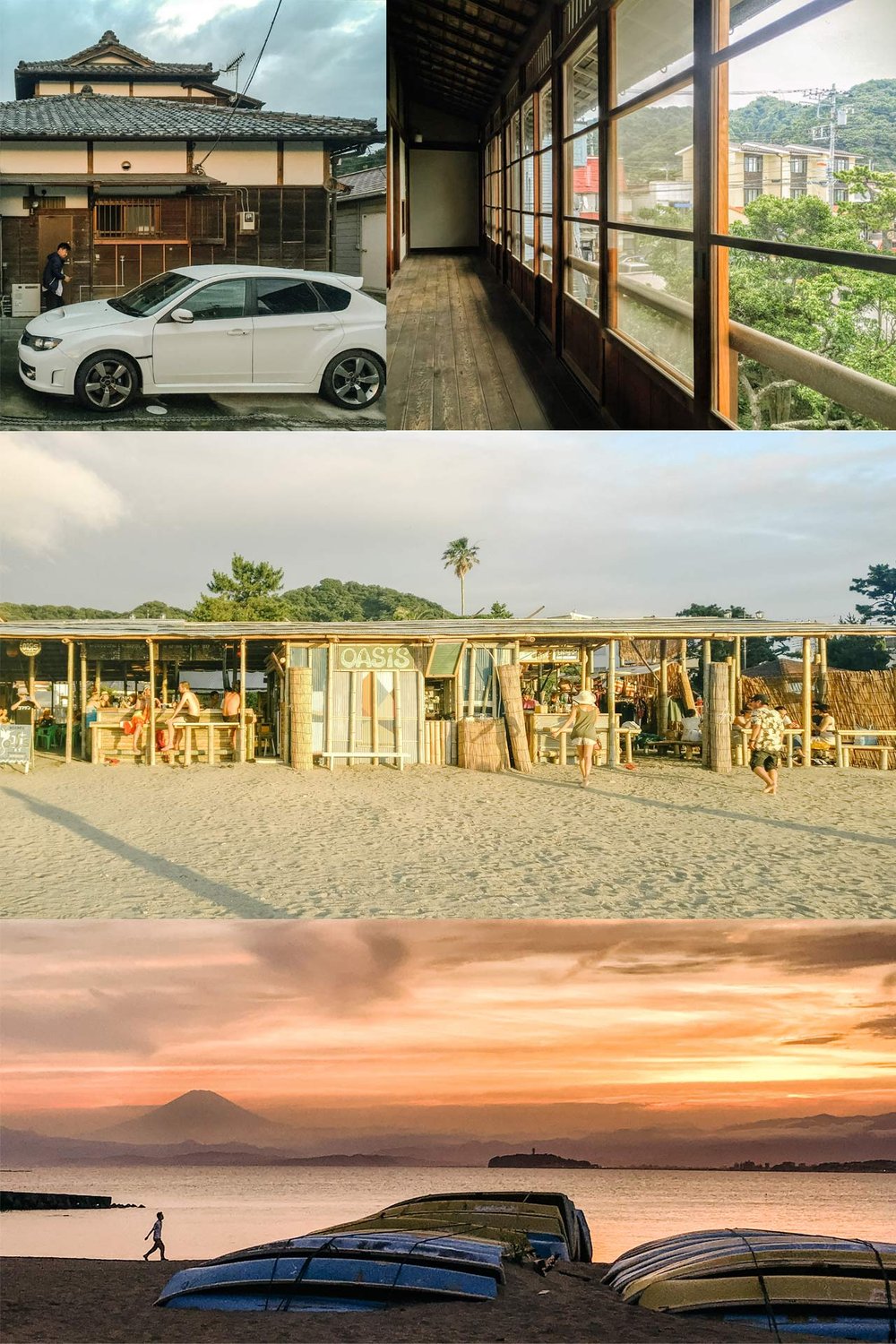
Hayama was an easy choice — aside from being readily available, it has great access to nature and a vibrant local community built around the umi no ie, or beach houses that pop up during summers to serve food, drinks, and play live music.
And so for a time, we lived and worked in Tokyo while commuting back and forth to Hayama. We took day trips and occasional overnight stays to carry out development, user testing, and demos between the two spaces. To make up for the longer train rides, we took extra opportunities to enjoy swims, beers, and music on hot summer days. 🏖️😎
Becoming distributed
Over time, our team expanded to include Brian, Andrea, Adam, and Zucca. As we outgrew the Straylight space, we looked for a second space in Tokyo for R&D and warehousing, and in early 2020 we built the annex a few minutes down the road. This space provides our dev team with more room to prototype, make messes, and store tools and inventory.
Then in March 2020, sensing an imminent lockdown from the impending pandemic, a few of us preemptively moved to Hayama to escape the confines of our small Tokyo apartments. Though we planned to stay for only a few weeks, it soon became clear that the pandemic would last much longer. Fortunately, Hayama offered an excellent quality of life, especially for those of us with kids (it was a game-changer to live near beaches, mountains, and open space). By summer, more of our team followed and moved from Tokyo to Hayama.
Meanwhile in Tokyo, some members of our team moved their homes to be closer to the Straylight space and neighboring areas. And as Japan got the virus relatively under control, we slowly began using our offices again, and utilized tonari full-time to stay connected between Hayama and Tokyo. Not only could we spread out more safely across all of our spaces, we could also live comfortably where we wanted to, with much shorter walking and biking commutes.
And so we started with one location...
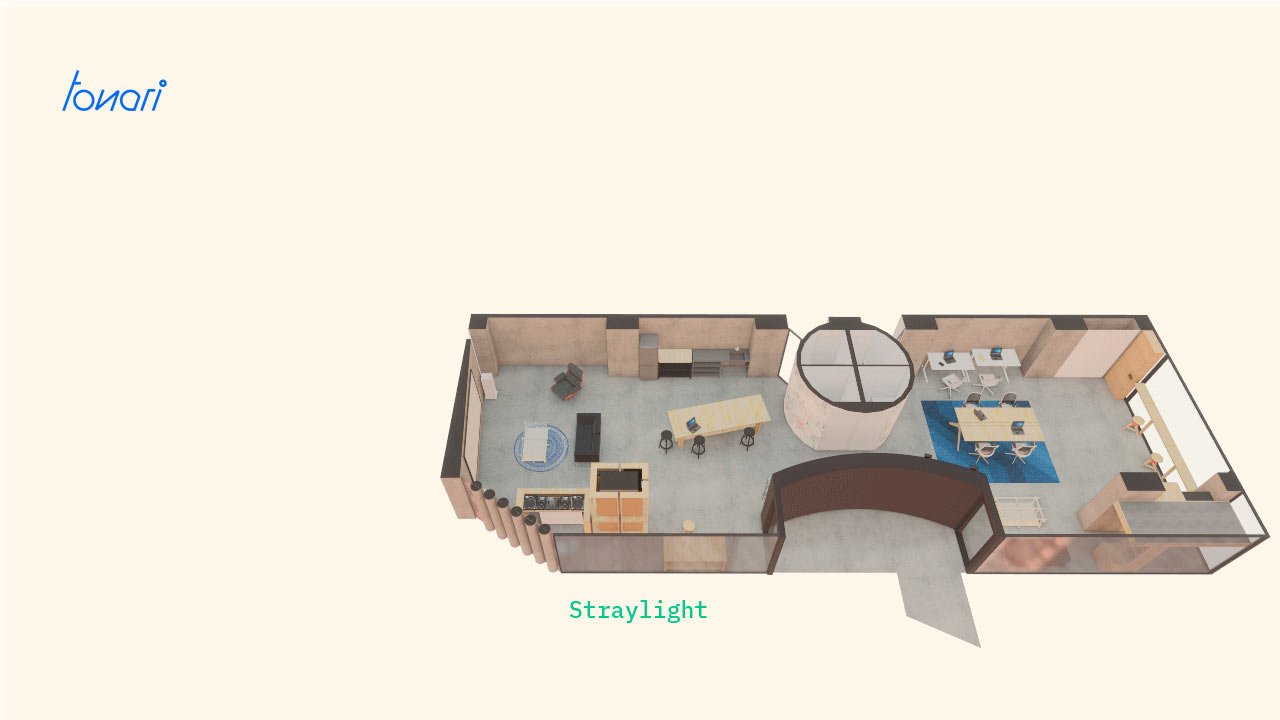
And then (virtually) grew into two...
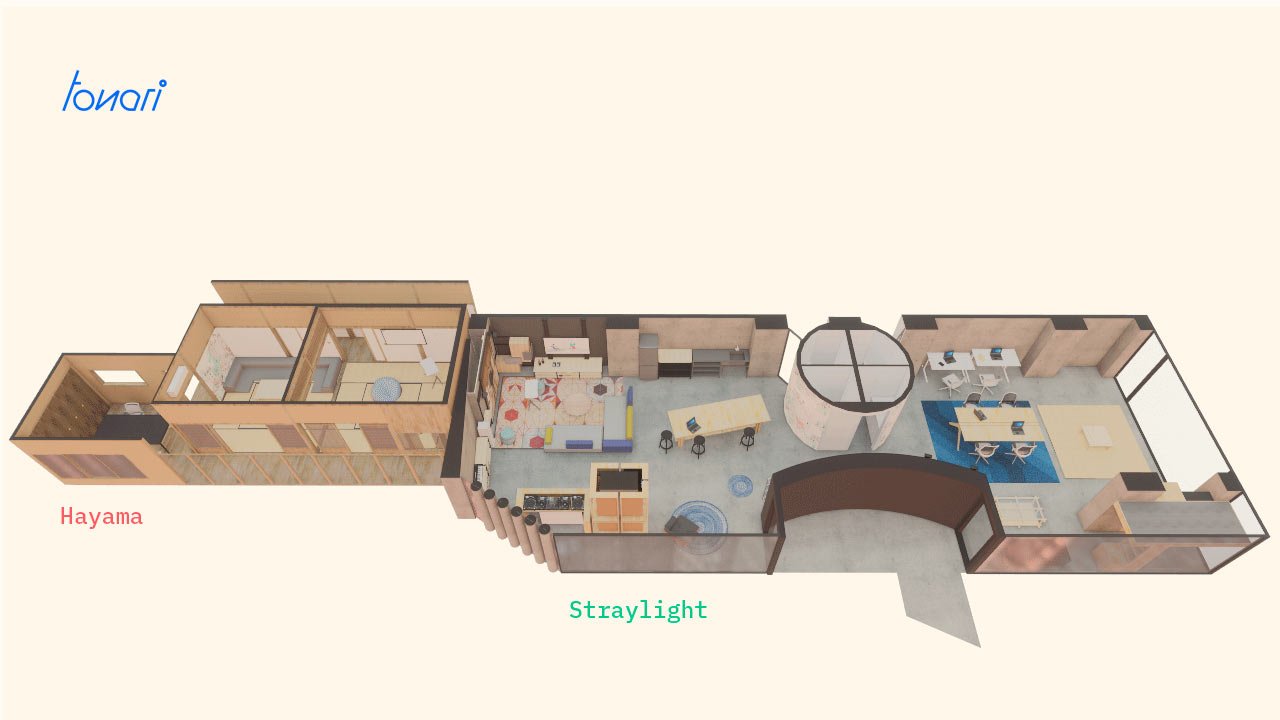
And then three:
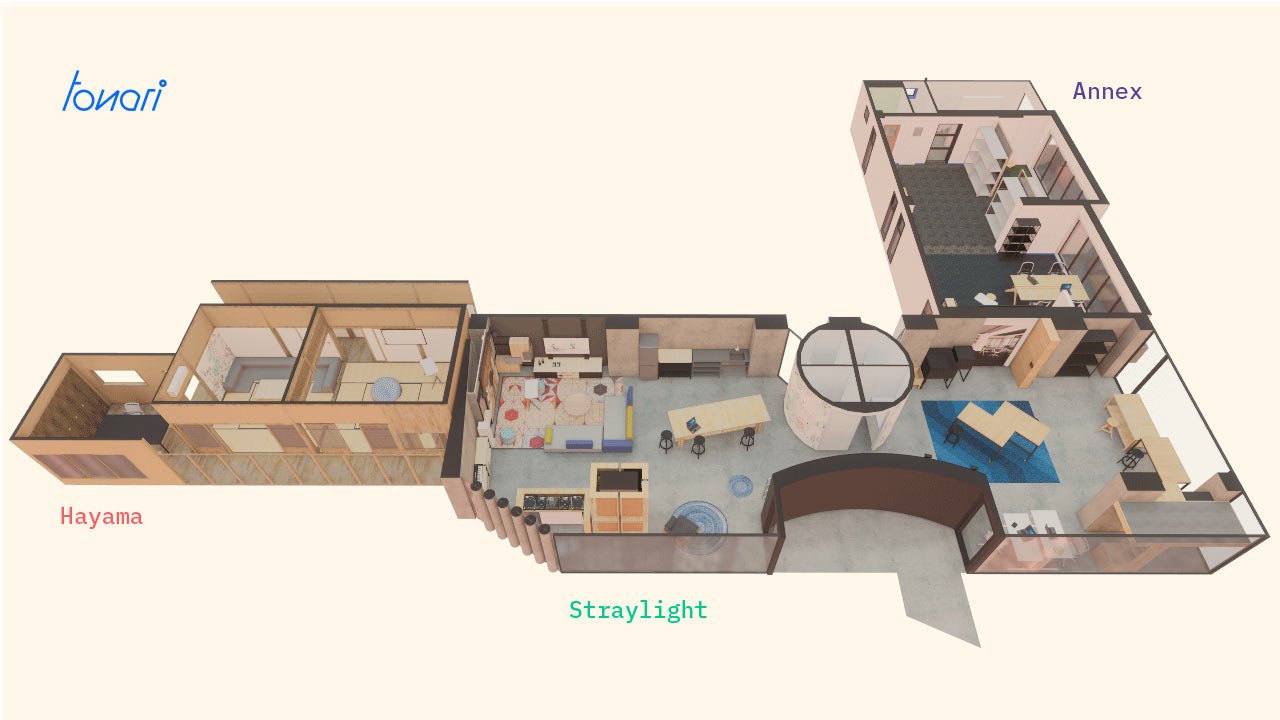
This is our office today. tonari connects all of our locations, with the Tokyo Straylight space acting as a central "hub" to the annex and Hayama spaces.
How tonari uses tonari
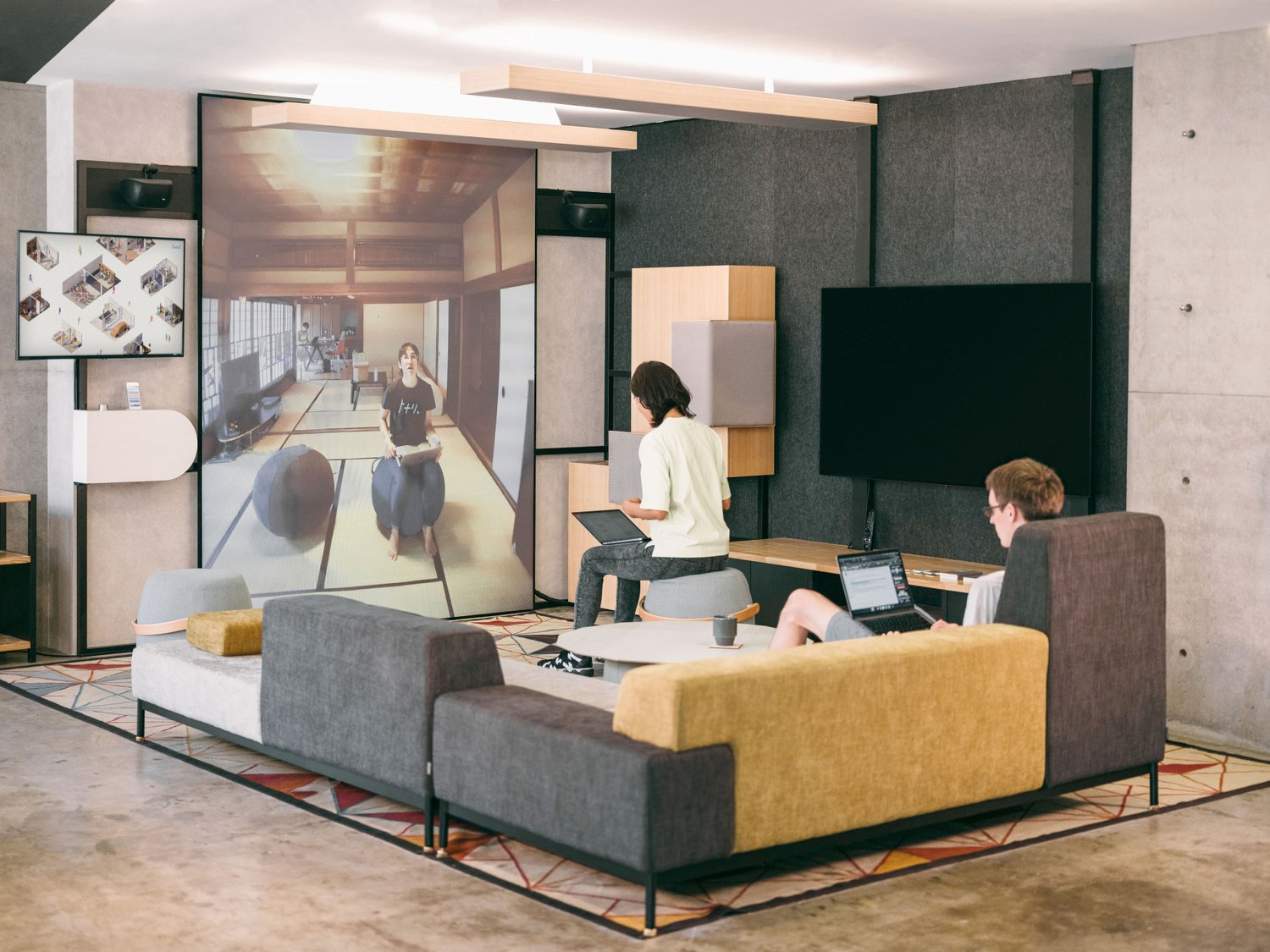
In product development, they say you should “eat your own dog food,” that is, a company should use and test its own products. Our team's growth, along with pandemic-induced lifestyle changes, created genuine opportunities for us to incorporate tonari into our everyday. Over time, we've come up with many interesting ways to use tonari. We'd like to share a few with you.
Being together
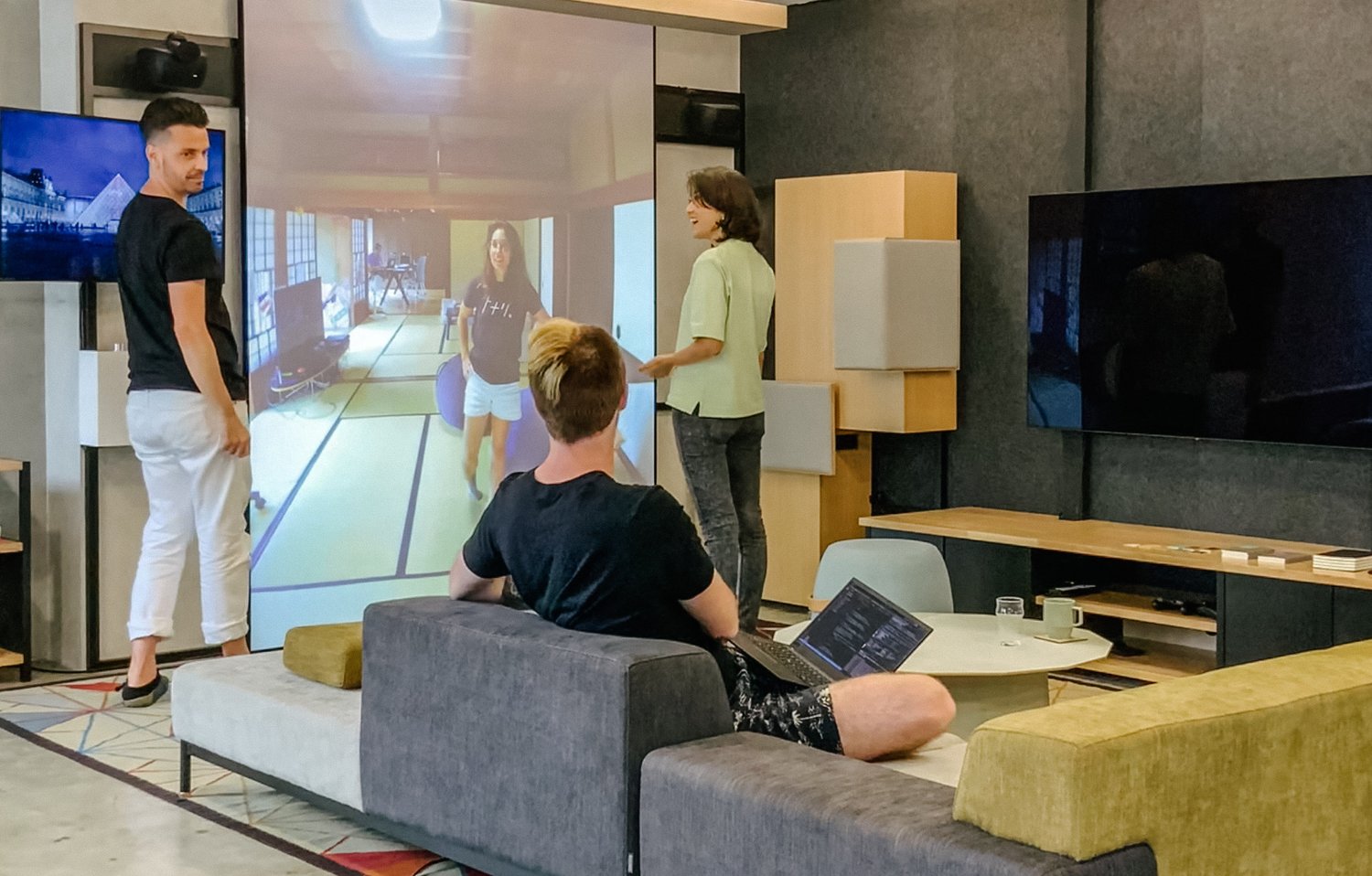
Most of the time we’re using tonari, it doesn’t really feel like we’re using it at all. We're simply being together, benefiting from the casual information exchange that happens when people share the same space. We overhear conversations and build context without any extra effort. We can pull colleagues (or get pulled) into discussions as they're happening.
For example, if Sumio and Ryo are having a conversation in Tokyo, I can ambiently listen in while doing other work in Hayama. If something relevant to me comes up, I can jump in, or they can call out to me with a quick question.
Being together means we're also more in sync. When Jake and Zucca turn on the music and crack open beers at 6pm in Tokyo, Taj and Shiro in Hayama start unwinding and hanging out too.
In practice, many small interactions save us hours a day of note-taking, messaging, and asynchronous conversations that we would be forced to have otherwise without tonari. More importantly, none of these interactions are planned, they just happen.
Quick syncs
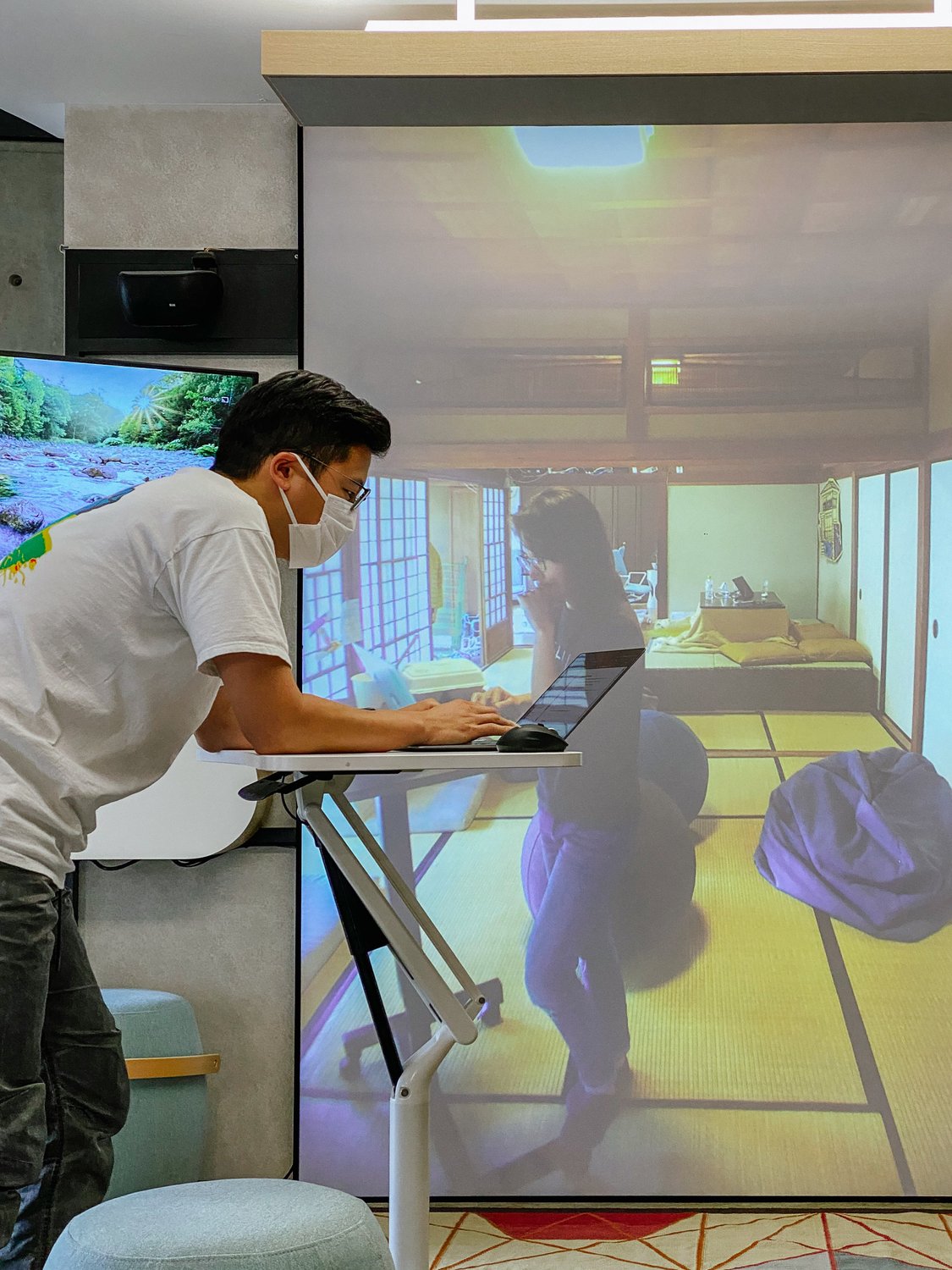
Through tonari, we pick up on each other's body languages and non-verbal cues to gather when teammates are focused or available to chat. That means we're constantly looking over at each other and calling out to check in or ask quick questions.
For example, when Gaku gets up to stretch, I know I can ask him a question without interrupting his workflow. "How should I write this complicated Japanese email? Can I get your opinion on this?" What might take an hour waiting for someone to respond to a chat or email is typically resolved in seconds or minutes!
We also use tonari’s share screen function to view and edit the same document or take notes. It's like being able to look over a teammate’s shoulder to get the same view as we talk through what we're thinking and building.
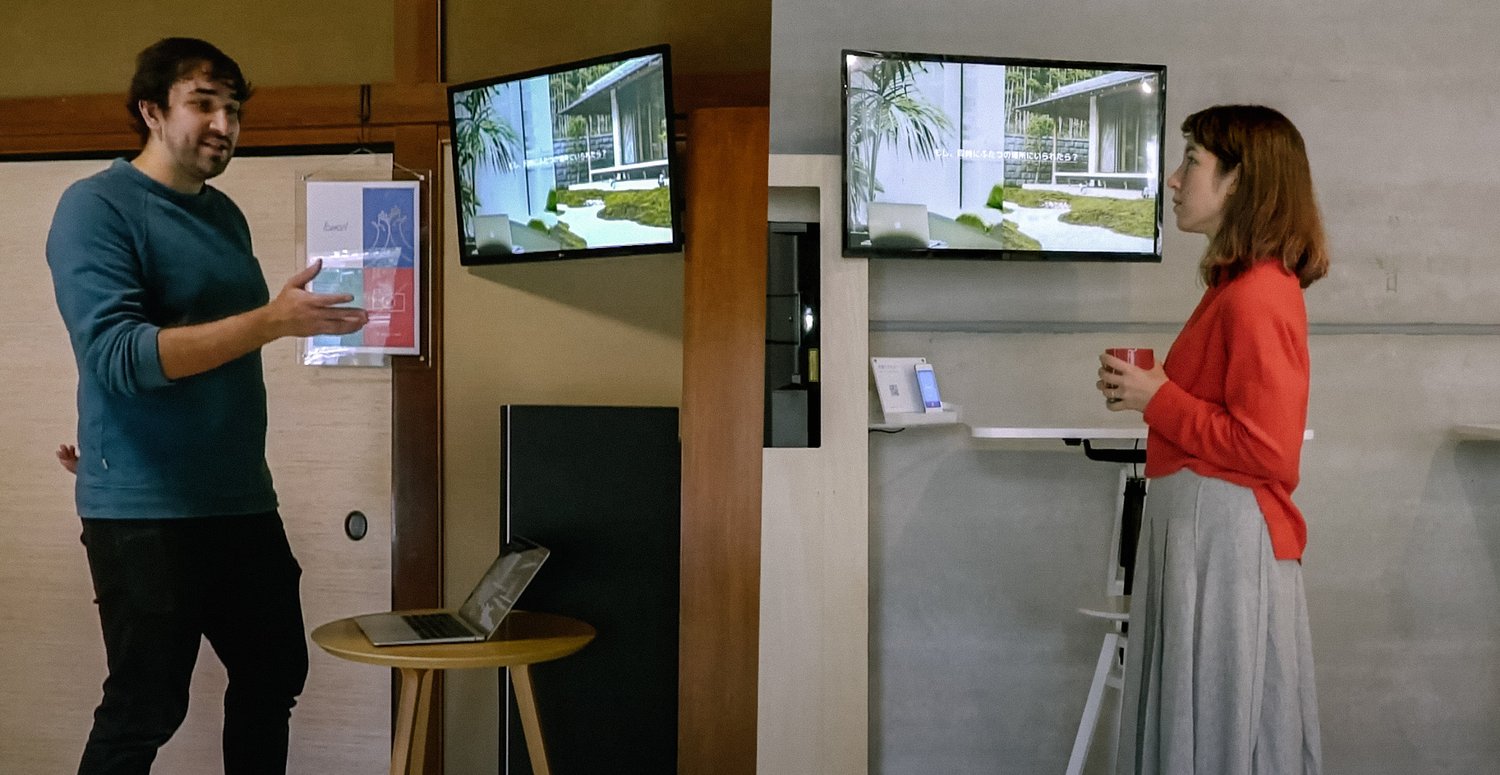
Having a shared screen separate from the main tonari screen means we still get to see our teammate’s physical reactions. This makes information sharing that much easier — we use cues to gauge excitement, confusion, or boredom, and can respond more quickly and naturally.
Meetings and such
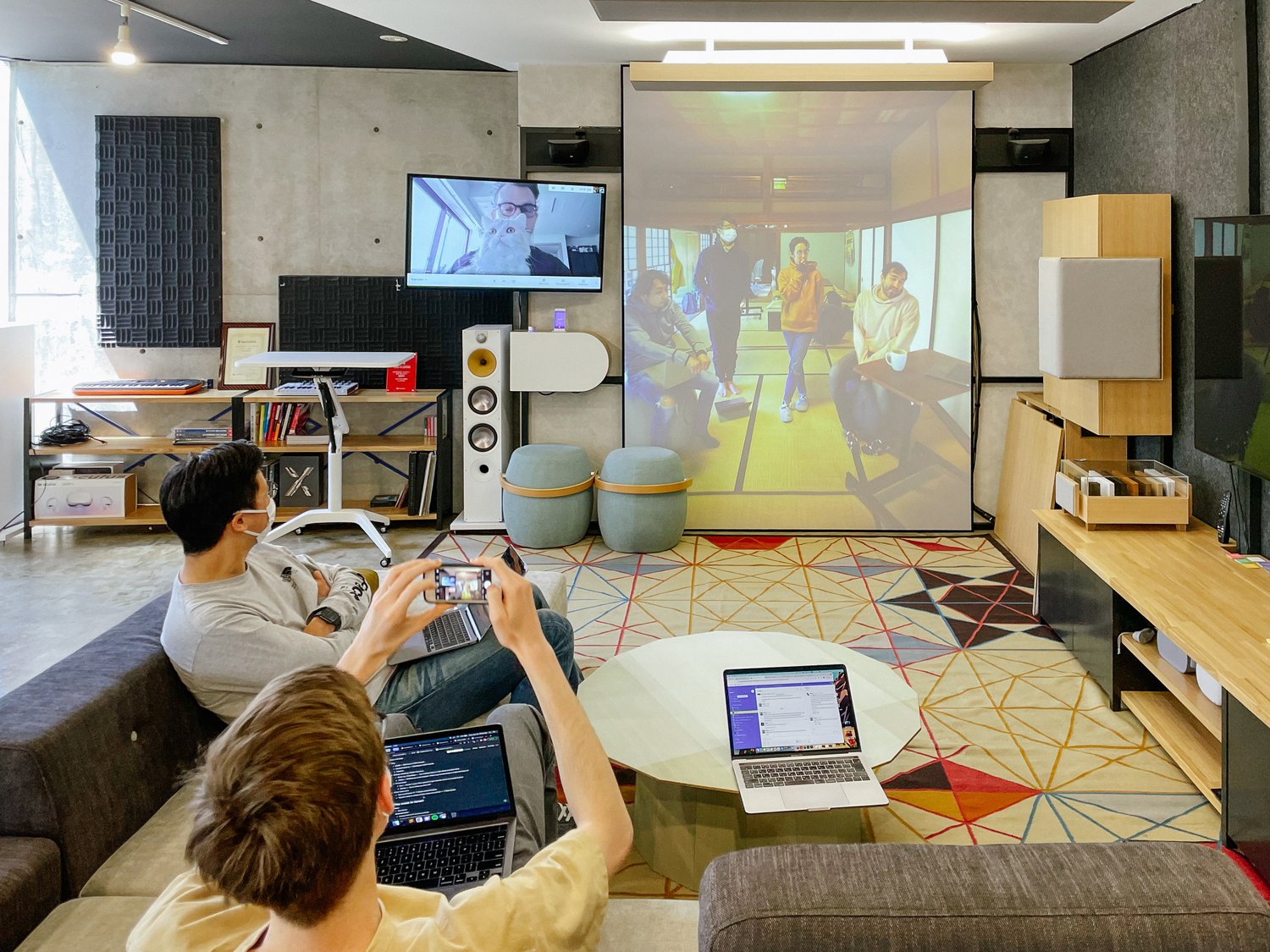
Of course, we use tonari for meetings too. We do our morning stand-ups, weekly planning, 1on1s, and brainstorming sessions through tonari. We laugh, debate, empathize, and even interject (look ma, no lag!). During our most intimate or heated conversations, we forget we’re even using tonari.
Besides our day-to-day internal meetings, we've also used tonari to:
- Host demos and external meetings. From Hayama, Zucca, Taj, and I welcome customers arriving at the Tokyo office and conduct meetings virtually. We can remotely unlock the door, which means that we don’t even need anyone to be in Tokyo, making it easier to create a COVID-safe environment.
- Meet investors. We raised our angel and seed rounds with first meetings via tonari.
- Hire team members. We recently interviewed and hired our newest member, Gaku, before ever actually meeting him in person!
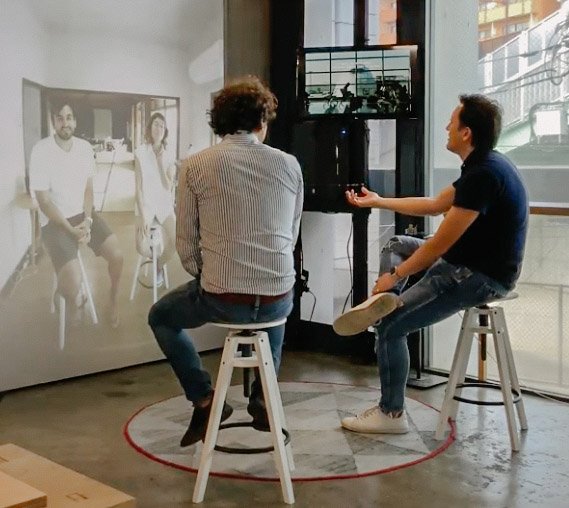
A big difference from web conferencing is that there's no off button, which means we get to enjoy the slightly awkward but pleasant chit-chat before and after a meeting. We feel like we get to know each other a little bit better, and this feels more similar to an in-person face-to-face meeting.
Playtime
We also like to play where we work. We celebrate birthdays, share home baking triumphs (Brian’s macarons 😋) and failures (macawrongs 😝), listen to music, and play games.
When my son, Soma, comes to the Hayama space after school, he always has people to hang out and play with. For example, Adam (in Tokyo) overheard Soma watching Pokemon, so Soma moved his iPad closer to the screen so Adam could watch with him.
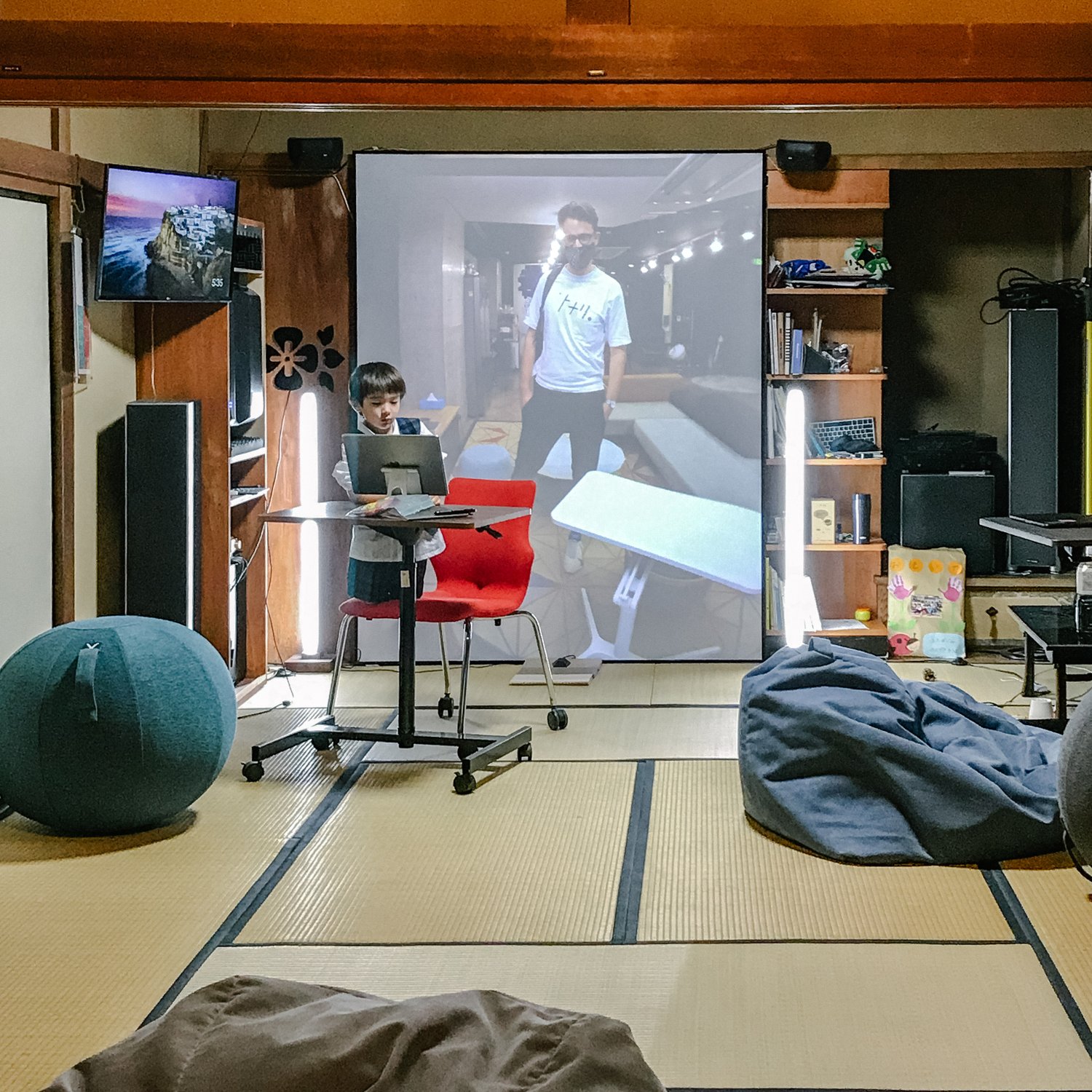
And here he is "stuck in the mud" and asking Jake in Tokyo for help. In the future, I can imagine him asking for help getting unstuck with his physics homework!
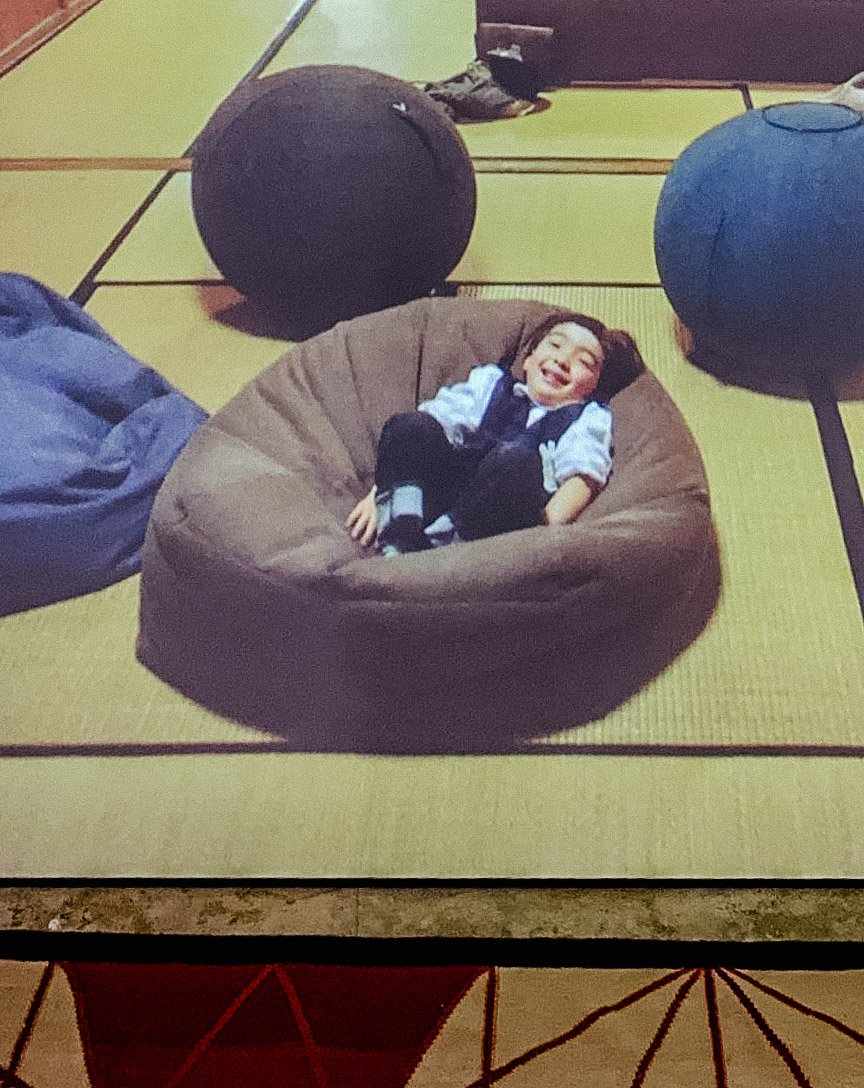
Jake and Brian’s evening Super Smash Bros. sessions also often draw crowds. Soma enjoys rooting for his favorite characters, like Meta Knight and Pokemon Trainer.
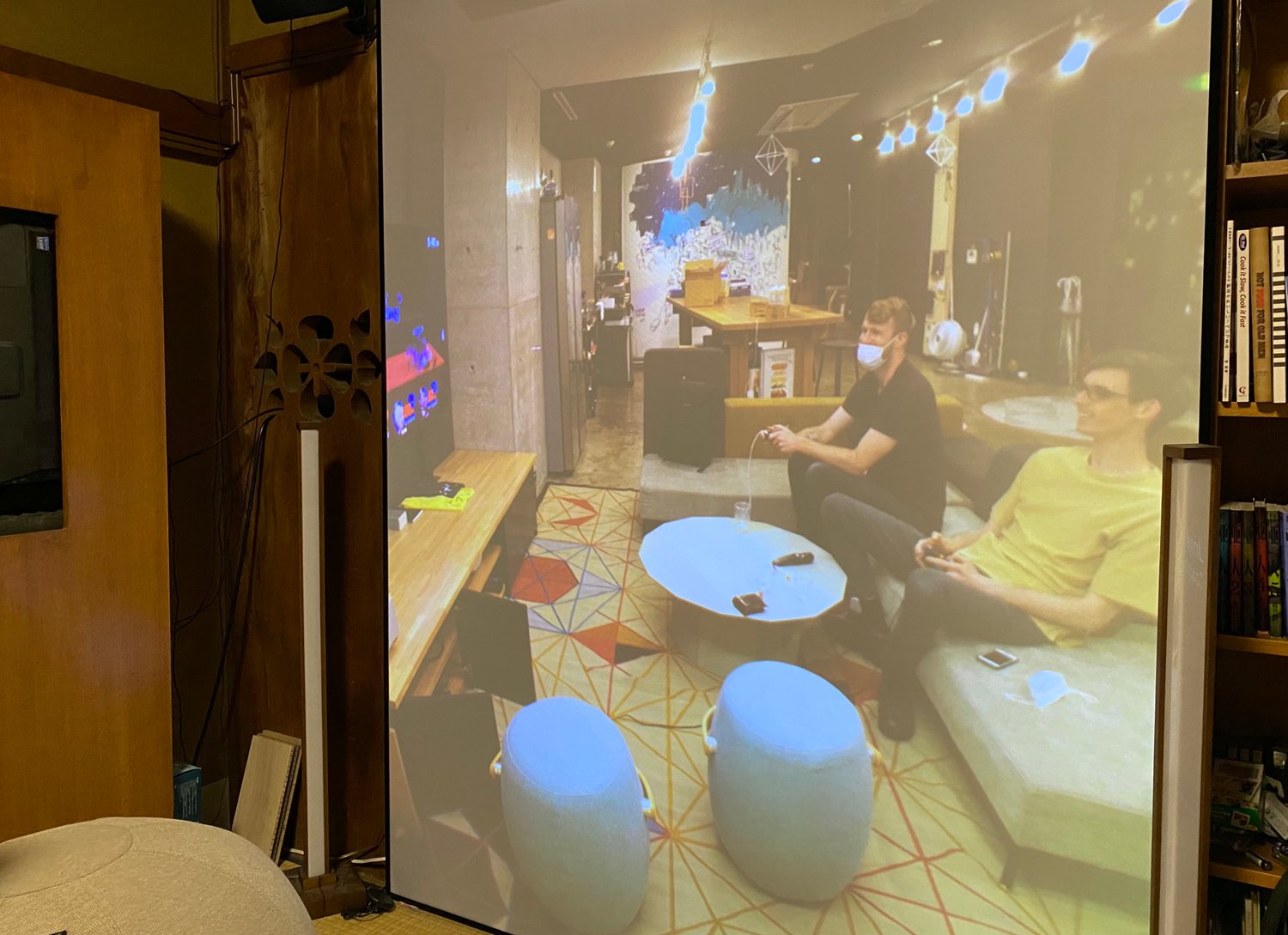
And if the fight gets too excited (i.e. a little too much profanity and/or screaming), we switch on quiet mode to temporarily close the door between the spaces. 🙉🙈
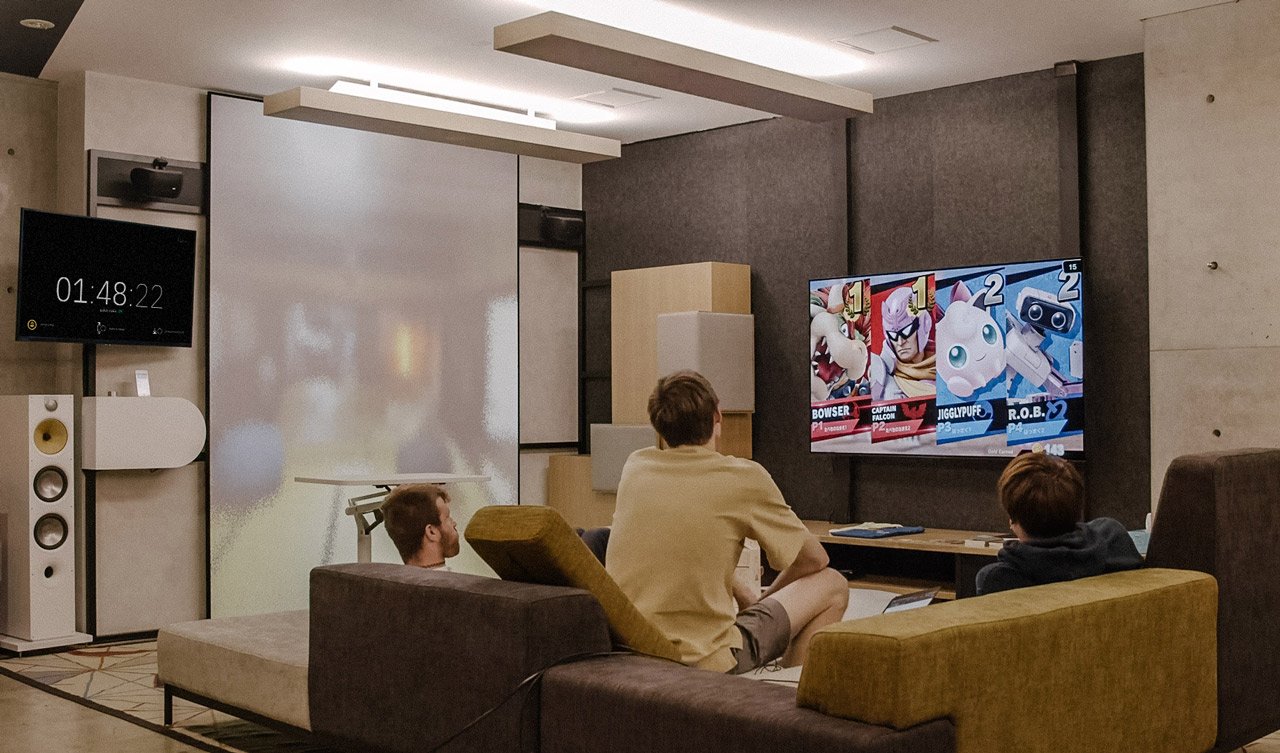
We've experimented with virtual group exercise, and did daily HIIT exercises together for a quick and energizing workout after stand-ups:
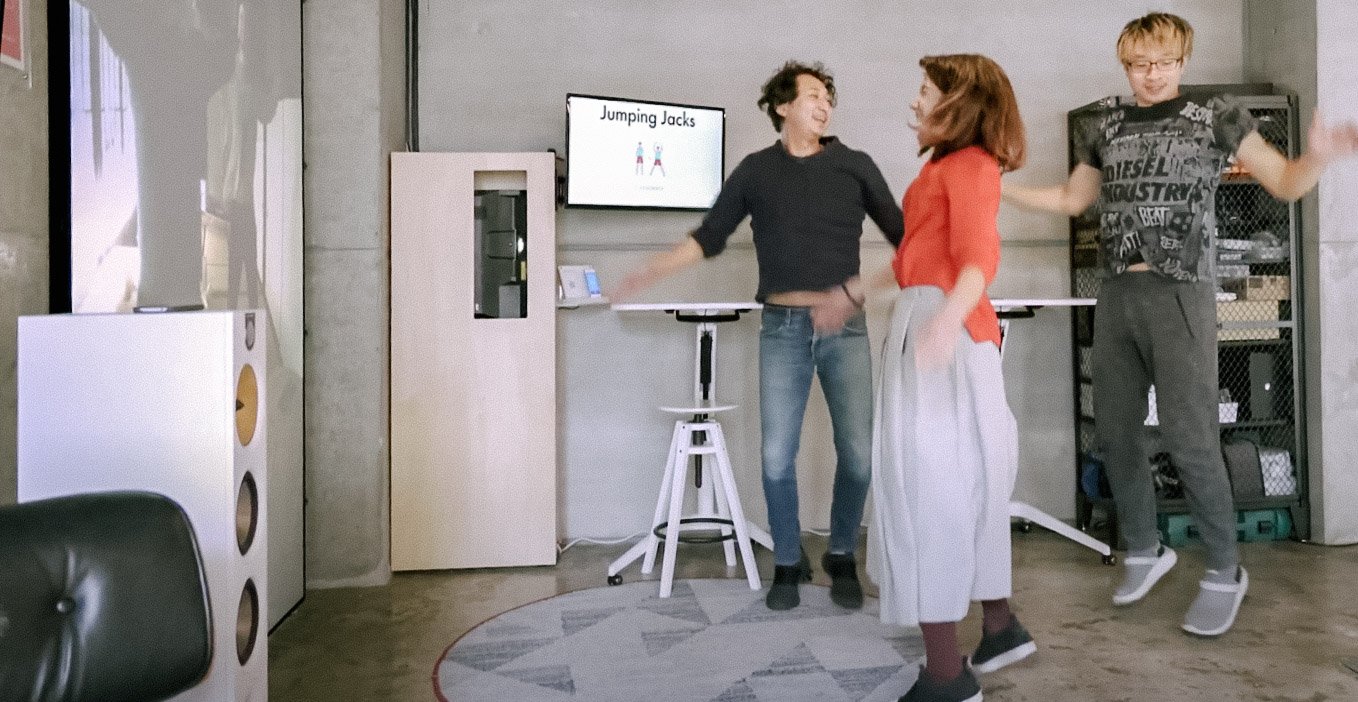
And our friend Jay led a yoga session from Hayama for a group in Tokyo. It was really cool seeing all of Jay's movements and hearing his breathing techniques. This was by far the best remote + guided exercise that I've experienced — we even got to make and enjoy breakfast smoothies together afterwards!
Playtime can also include people outside of our team. Friends often drop by the Straylight and Hayama spaces on weekends to hang out and work on hobby projects. On such occasions, we’ve witnessed how naturally people of all ages interact through tonari. Here’s Keita, 3, and Kota, 1, exchanging shy greetings. 👶
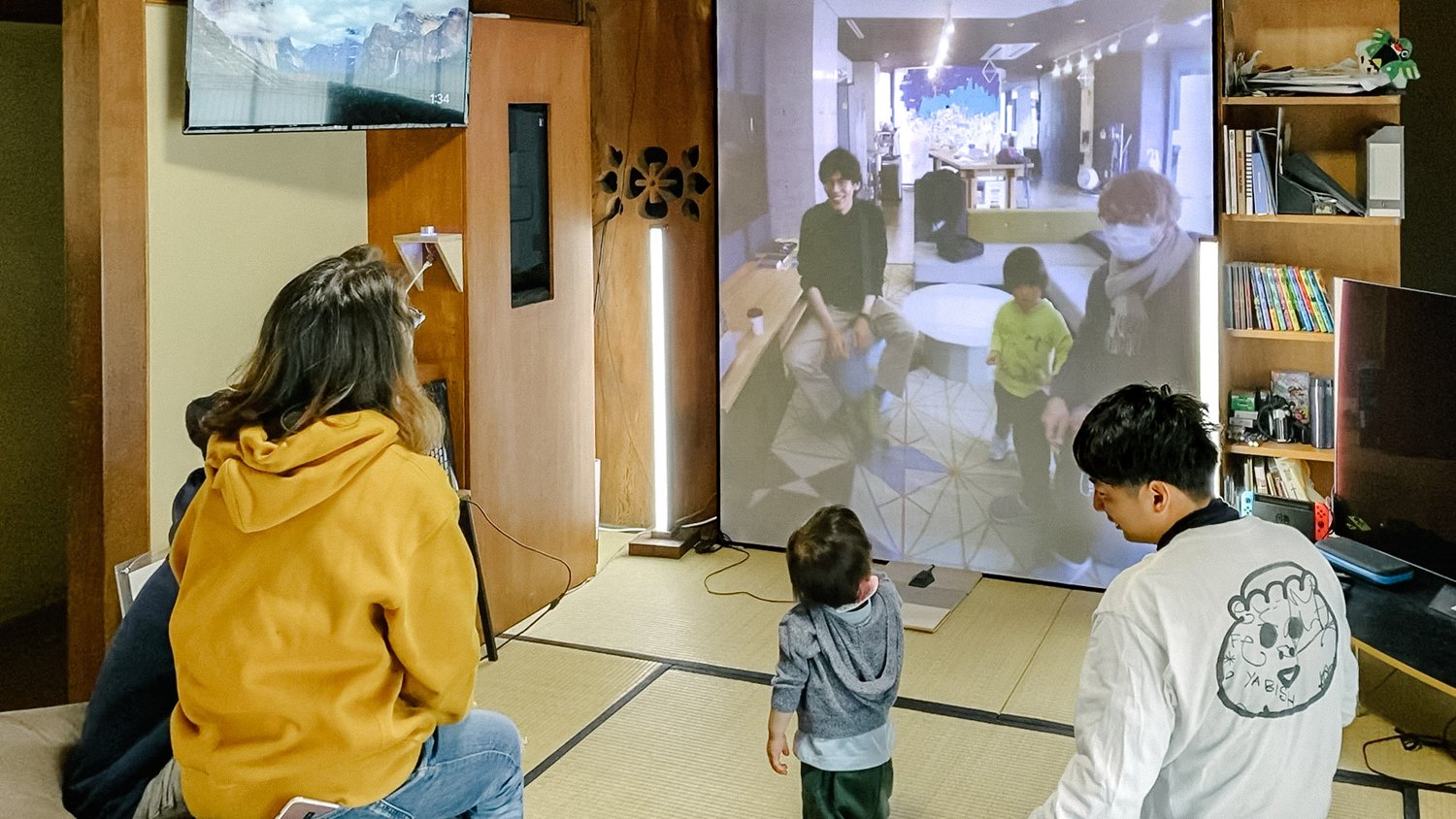
Other quirky and notable uses
Getting the mail: We get a lot of deliveries, and it's always a little entertaining to receive mail for Tokyo from Hayama. The delivery person enters an empty Tokyo office (this tends to happen during lunch time) and can't hide their bewilderment as we greet them from Hayama and ask them to leave the package on the table. It's kind of amazing that it works every time without any questions asked!
Gentle reminders: Being able to see into another space means we notice subtle things. Zucca was amazed that I noticed the laundry hadn't been hung out to dry in Hayama and reminded my husband to do it.
Finding tools and teaching: Recently, Taj in Hayama helped Zucca find the power drill in Tokyo, pointed out that it didn't have a battery, helped her find a charged battery, and taught her how to remove and replace the drill bits. How’s that for remote tutoring?
Taking a call on speakerphone: Gaku in Tokyo seamlessly joined a client call that I took on speakerphone from Hayama. It was a little awkward (I had to stand and point my phone towards the microphones), but it worked!
What's next?
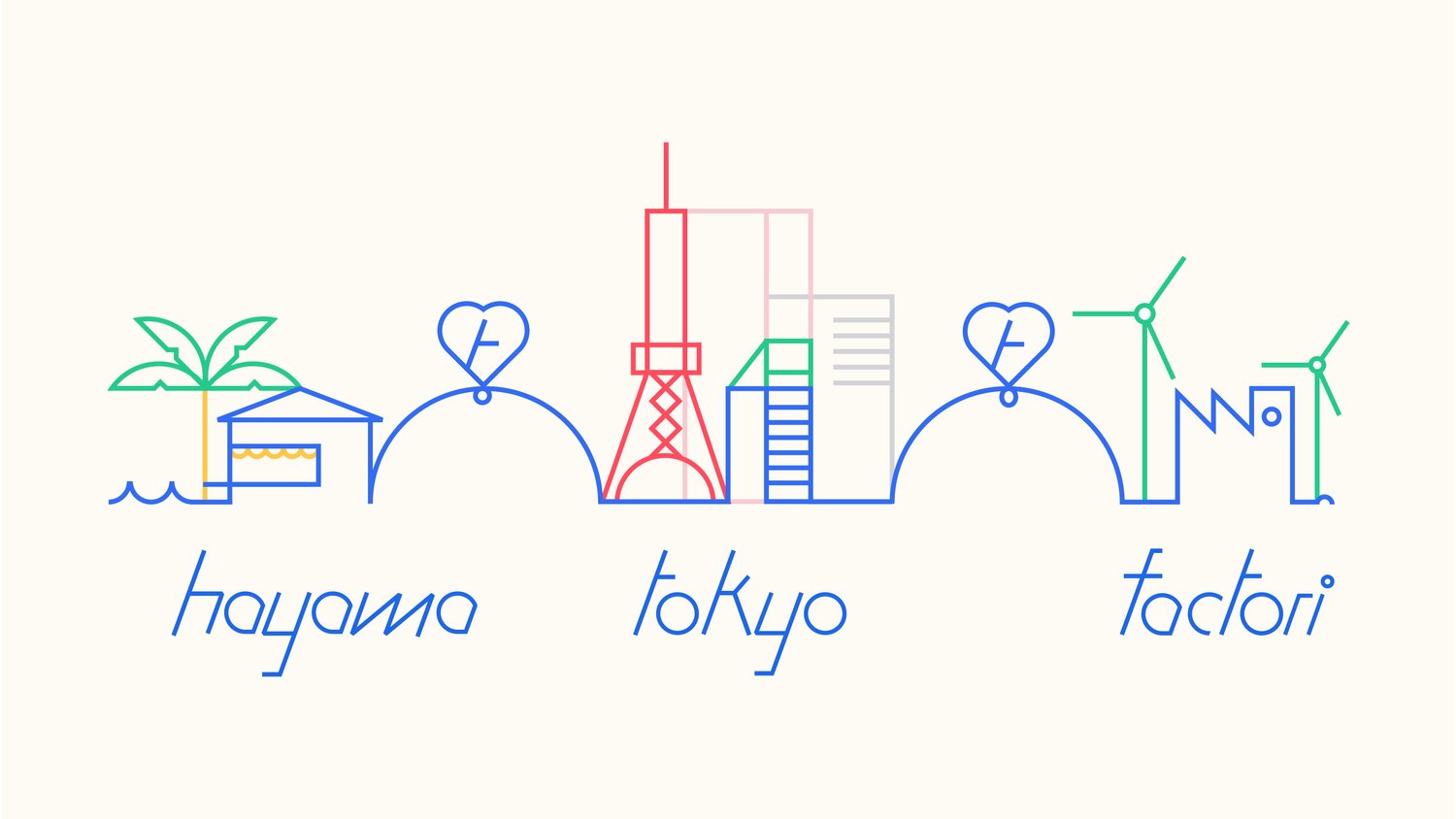
No doubt we’ll want even more space to build and play together as the company grows. For many startups, outgrowing an office is often costly and difficult, but at tonari we’re really excited for the challenges and possibilities of where and how we’ll grow!
This summer, we’re collaborating with friends to build a new space where visitors can have their own unique tonari experience. Along with a public cafe, the space will provide a “test platform” where various community members and groups can organize events, pop-up experiences, workshops, and more. We hope these new users will help us discover new use cases while exploring what's possible with tonari. We'll announce more details soon!
As we scale production, we’ll also outgrow the annex, and we’ll be looking to build a larger space where we can prototype, manufacture, and store equipment and inventory. We imagine this future "factori" to be somewhere lovely and livable.
Finally, as a multicultural team, we’ll inevitably become more international. Our newest engineering hire, Matěj, is based in Prague, and while he will initially relocate to Japan to spend time physically working with us, we see this as a likely first step to opening an office in Europe. Future international hires and customers will be the driver for further global expansion.
We hope our story helps show how tonari can create new possibilities for work and growth: to open new locations that provide employees with better lifestyles and shorter commutes; to expand without uprooting and rebuilding; or to extend operations further abroad.
If you're interested in using tonari to build the ultimate connected workplace, please start the conversation here.

Thanks for reading! You can learn more about tonari and our team on our blog and website, and follow new developments via our monthly newsletter.
We're also hiring and we'd love to hear from you. Please check our team page for details, and feel free to reach out.
Find us 💙
Facebook: @heytonari Instagram: @heytonari X: @heytonari
